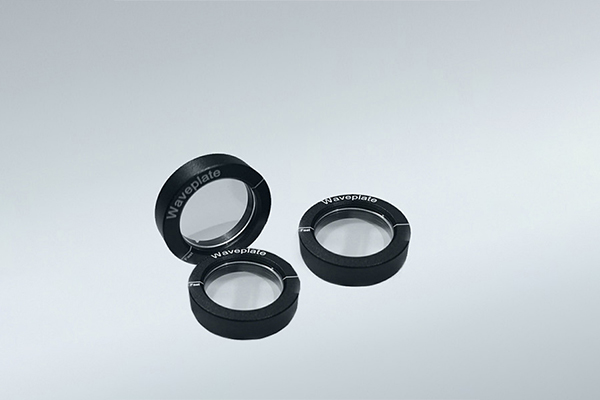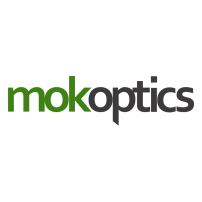Introduction
Cemented zero-order wave plates play a crucial role in optics due to their temperature and wavelength stability, particularly in waveplates—key components for altering the polarization state of light. Composed of two quartz plates with their fast axes crossed and bonded together with UV epoxy, cemented zero-order wave plates are indispensable tools in a variety of optical applications. This article delves into the complexities of cemented zero-order wave plates, exploring their structure, properties, and advantages.

What is a cemented zero-order wave plate?
MOK Optics’ cemented zero-order wave plate is designed to achieve precise retardation with minimal sensitivity to wavelength and temperature variations. It consists of two quartz plates, each with its fast axes crossed and bonded together with UV epoxy. The thickness difference between these wave plates determines the wave plate’s retardation, which can be configured to produce either a quarter-wavelength (λ/4) or half-wavelength (λ/2) retardation.
Key Features of Cemented Zero-Order Wave Plates
Epoxy Bonding: UV epoxy ensures a strong bond between the quartz wave plates, enhancing their durability and reliability.
Thickness: 1.5–2 mm: A specific thickness range allows for precise control of retardation to meet a variety of optical requirements.
Dual Retardation Plate: This feature enables the wave plates to provide true zero-order retardation, minimizing dependence on external factors such as temperature and wavelength.
Wide Spectral Bandwidth: Cemented zero-order wave plates can handle a wide range of wavelengths, making them suitable for a wide range of applications.
Wide Temperature Bandwidth: Their construction ensures stability over a wide temperature range, enhancing performance in fluctuating environments.
AR Coating and Mounting: Double-sided AR coating reduces loss and improves efficiency, while a variety of mounting options make them easy to integrate into optical systems.
Over Multi-Order Wave Plates
Zero-order wave plates (including cemented wave plates) offer significant advantages over multi-order wave plates. Their construction ensures reduced dependence on temperature and wavelength variations, making them ideal for applications requiring high stability and precision. Cemented zero-order wave plates maintain their performance under a wide range of conditions, which is critical for demanding environments such as laser systems and interferometry.
Comparison with Other Waveplate Types
Optically Contacted Waveplates: While cemented zero-order waveplates exhibit lower wavefront distortion and parallelism, they offer superior temperature bandwidth and wavelength stability.
Air-Gapped Waveplates: While air-gapped waveplates are known for their high damage threshold and are well-suited for high-power applications, cemented zero-order waveplates are preferred for their stability under varying conditions.
True Zero-Order Waveplates: Compared to standard zero-order waveplates, these waveplates offer enhanced performance across all parameters, making them suitable for critical applications.
Applications of Cemented Zero-Order Waveplates
Cemented zero-order waveplates are an integral component of precision laser systems, interferometry, and polarization control applications. They maintain retardation accuracy and stability across a wide spectral and temperature range, making them ideal for the following applications:
Laser Optics: Ensure consistent polarization control in laser applications.
Interferometry: Provide stable performance essential for precise measurement and analysis. Polarization Rotator: Utilizes the natural rotational properties of quartz crystals to rotate polarization.
Specifications of Cemented Zero-Order Wave Plates
Material: Quartz Crystal
Dimensional Tolerance: +0.0/-0.2 mm
Surface Quality: 20/10 Scratches and Pit Resistance
Wavefront Distortion: λ/8 @ 632.8 nm
Retardation Tolerance: < λ/300
Damage Threshold: >500 mJ/cm², 20 ns, 20 Hz @ 1064 nm
Choosing the Right Wave Plates
When selecting a wave plate, consider the retardation type (half-wave, quarter-wave), size, and operating wavelength. For applications where temperature and wavelength bandwidth are critical, cemented or true zero-order wave plates are recommended. If wider wavelength coverage is required, achromatic wave plates are a viable solution.
Conclusion
Cemented zero-order wave plates represent the pinnacle of precision and stability in optical technology. Their structure and properties make cemented zero-order wave plates indispensable for applications requiring high precision and reliability. As optical systems continue to evolve, the role of cemented zero-order wave plates will undoubtedly expand, thanks to their consistent performance under varying conditions. Whether you’re integrating them into a laser system or using them for interferometry, these wave plates provide the stability and precision required to achieve optimal results.
